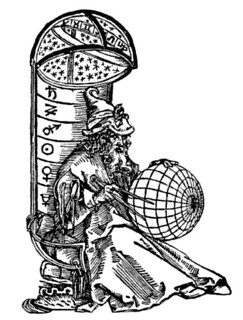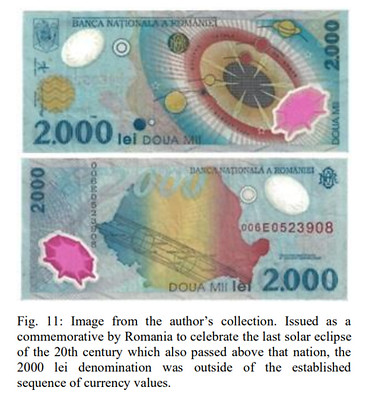
PREV ARTICLE
NEXT ARTICLE
FULL ISSUE
PREV FULL ISSUE
V25 2022 INDEX E-SYLUM ARCHIVE ASTRONOMICAL HISTORY IN NUMISMATICSMike Marotta writes: "I had a placement about collecting numismatic and philatelic topic themes in Issue #100 of the History of Astronomy semi-annual newsletter. See pages 20-24.
"In addition to catching other people's subject-verb disagreements and comma splices, I am always looking for writers who want to place about 750 words on a timely celebration of astronomical history in a peer-reviewed publication. "The AAS is focused on researchers, primary investigators who run programs and hire post-doctoral students and others not as far along in their careers. If you have a doctorate in astronomy and only teach at university, you can be an Educational Affiliate, just as I am an Amateur Affiliate member. That said, though, the AAS is reaching out to a wider audience in the wake of their purchase and rescue of Sky & Telescope magazine, following the demise of F+W Media. They also bought (and saved from extinction) Willmann-Bell, publishers of books targeted to the broad range of hobbyists up to the professional level." Here's an excerpt. See the complete article online for more. -Editor With some exceptions, astronomical images seldom appeared on ancient coins of the archaic Hellenic and ancient Hellenistic koine social contexts before the extension of the Roman republic in the second century BCE. Some Roman coins of the Pax Romana early empire do show one or more stars within a crescent Moon, clearly intended to set the time of a notable conjunction though symbolic rather than representational. Easily the most famous examples are the Caesar's Comet with Octavian Augustus on the obverse and a comet on the reverse with the inscription DIVVS IVLIVS referring to the deification of Gaius Julius Caesar following his assassination in 44 BCE. Broadly accepted by numismatists as markers of an actual event the coins remain putative among astronomers. Stronger acceptance is found for the issues of Tigranes II (Tigranes the Great) of Armenia (140-55 BCE) depicting a prominent star in the king's crown which is correlated to an appearance of Halley's Comet in 82 BCE while Tigranes was extending his empire.
To read the complete newsletter (see pages 20-24), see:
THE BOOK BAZARREWayne Homren, Editor The Numismatic Bibliomania Society is a non-profit organization promoting numismatic literature. See our web site at coinbooks.org. To submit items for publication in The E-Sylum, write to the Editor at this address: whomren@gmail.com To subscribe go to: https://my.binhost.com/lists/listinfo/esylum All Rights Reserved. NBS Home Page Contact the NBS webmaster 
|

